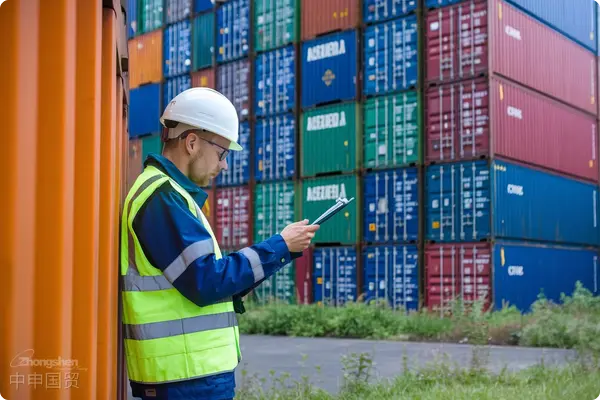- Shanghai Zhongshen International Trade Co., Ltd. - Two decades of trade agency expertise.
- Service Hotline: 139 1787 2118
The impending tariff policies of U.S. President-elect Trump have plunged the American retail industry and consumers into an atmosphere of heightened price expectations. Many retailers have rolled out discount promotions ahead of the official tariff implementation, using slogans like pre-tax sales and pre-tariff clearance to attract consumers and fans to accelerate purchases. Such marketing strategies have appeared across furniture, outdoor products, and beauty items, as businesses aim to clear inventory before tariffs potentially drive up costs significantly, ensuring a revenue buffer after the new policies take effect.

Online furniture retailer Finally Home Furnishings bluntly urged customers on social media to buy before prices double. This is both a survival strategy for retailers facing uncertainty and a last window for consumers anticipating price hikes. During his campaign, Trump pledged to impose 60% tariffs on all Chinese goods and 10% to 20% tariffs on goods from other countries. On November 25, he further announced plans to impose a 25% tariff on imports from Mexico and Canada, along with an additional 10% surcharge on Chinese goods. These measures remain unclear in terms of specific product categories, tariff rates, and implementation timelines, but they have already created significant psychological pressure on retail supply chains and cost structures.
Facing potential supply chain disruptions and soaring costs, U.S. businesses are taking preemptive action: they warn consumers that if they don’t buy now, they’ll face double or even higher prices after tariffs take effect. U.S. furniture retailers, outdoor product vendors, and beauty product manufacturers, among others, are leveraging tariffs to create a buying frenzy. Showerhead brand Jolie Skin informed customers via email that prices could rise by 25% once tariffs take effect. Outdoor retailer Tarptent similarly promoted its Black Friday deals, claiming such discounts might be hard to come by after the tariff policies are implemented.
In consumer communities and social platforms, some influencers and opinion leaders actively encourage their followers to seize the last opportunity for low prices and stock up on daily necessities.Cosmetics & Personal CareItems such as shampoo, food, and other daily essentials are being hoarded. Some consumers are also sharing tips on storage and bulk purchasing across various platforms to prepare for the potential high-price era next year. Sidney Arnold, owner of Finally Home Furnishings, bluntly stated that people often misunderstand that tariffs are borne by exporting countries, but the actual costs will ultimately be passed on to U.S. consumers. A fishing rod part that once cost only $15 has now risen to $74. As the U.S. intensifies tariff pressures on Asian component imports, Joe Onorato, owner of custom fishing rod retailer J&J Sports Service, is increasingly worried about the future. He mentioned that recent promotional ads are simply a reminder to customers: Buy your favorite items now before prices skyrocket completely.
Although major retailers have not explicitly labeled it as pre-tariff promotions, companies like AutoZone and Lowes have publicly stated that any additional costs from tariffs will be passed on to customers. The National Retail Federation (NRF) estimates that new import tariffs, if implemented, could cost U.S. consumers $46 billion to $78 billion annually. This means retail prices could rise to levels that are difficult for consumers to accept or afford, thereby impacting overall consumer demand. When prices increase significantly, consumers will become more budget-conscious, cutting back on spending and becoming more selective about products. This will put greater pressure on the profit margins and survival of small and medium-sized businesses.
In this scenario, some small business owners are adopting a preemptive strategy. Anthony Ruiz, who sells custom stickers and badges online, has launched a pre-tariff sale across Instagram, Facebook, and TikTok, offering a 25% discount to encourage customers to place orders early. He has also increased orders from Chinese manufacturers, hoping to stock up before the new tariffs take effect next year. He revealed that orders surged to 170 within just a few days of the promotion. Once tariffs are imposed, he estimates the price of a 2-inch badge will rise from $10 to $17—a cost increase significant enough to alter consumption and sales patterns.
Overall, the implementation of high tariffs by U.S. President-elect Trump remains uncertain, but U.S. retailers, manufacturers, and consumers have already entered a state of psychological preparedness. Pre-tariff promotions are not just a means for businesses to buffer cost impacts but also highlight how various segments of the supply chain are striving to maintain competitiveness and market share before the new tariff era arrives amid a transforming global trade environment. In the coming months, the strategic choices of U.S. businesses and consumer purchasing behavior may serve as key indicators for assessing the impact of the new policies.
Related Recommendations
? 2025. All Rights Reserved. 滬ICP備2023007705號-2  PSB Record: Shanghai No.31011502009912
PSB Record: Shanghai No.31011502009912









